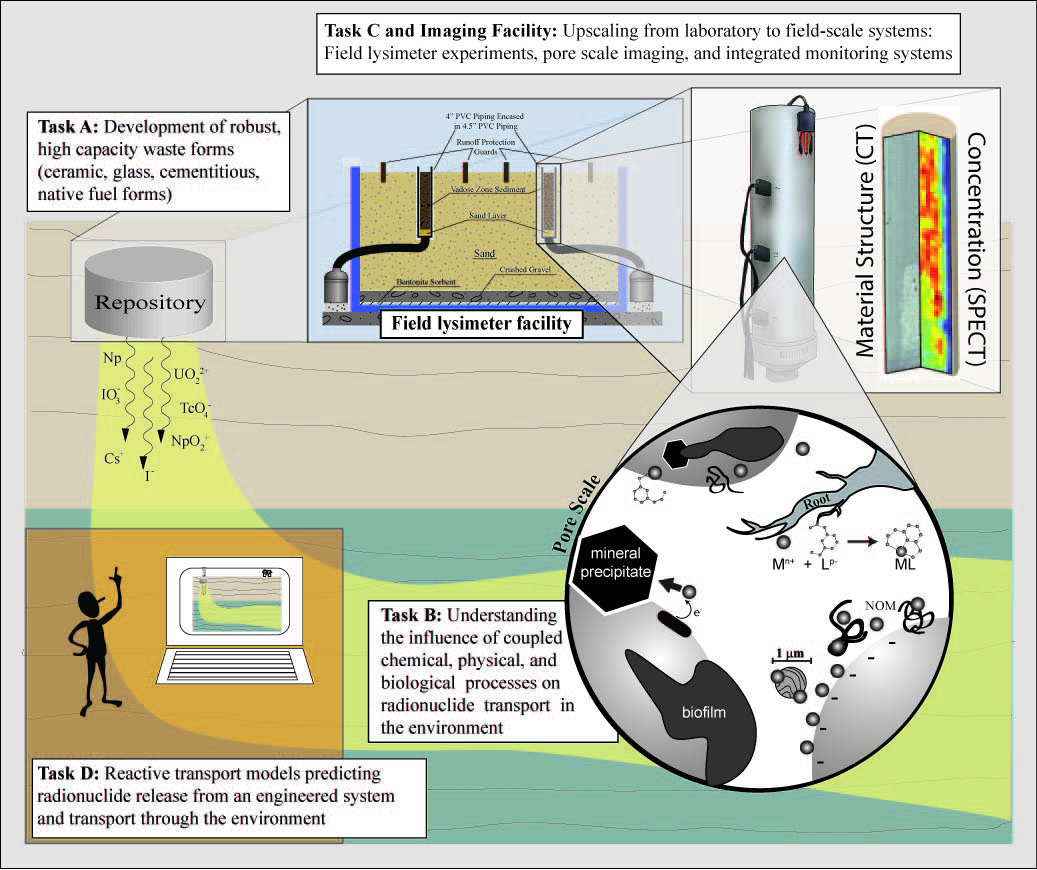EPSCoR Implementation
Radionuclide Waste Disposal: Development of Multi-scale Experimental and Modeling Capabilities
The grant has been renewed for 2 years and an additional $2 million.
A U. S. Department of Energy, Experimental Program to Stimulate Competitive Research (EPSCoR) Implementation project funded by the DOE Office of Science, Office of Basic Energy Sciences and Office of Biological and Environmental Research under Award Number DE-SC-00012530.
This project is collaboration between scientists and engineers at Clemson University, University of South Carolina, and South Carolina State University. Principal Investigator: Brian A. Powell, Clemson University (bpowell@clemson.edu, 864.656.1004).


The experimental and modeling efforts of this project are guided by the overarching scientific question:
What are the major molecular level chemical, biological, and microbial interactions that control the mobility of radionuclides in natural and engineered systems and how can these molecular and pore scale processes be properly defined and quantified for incorporation into larger scale, coupled experimental systems and reactive transport modeling efforts?
To address this question, our team has expertise in a range of disciplines including: (radio)chemistry, radiation detection and measurement, nuclear engineering, environmental engineering, civil engineering, hydrology, geology, materials science, physics, plant physiology, soil science, and quantitative modeling capabilities ranging from atomistic to field scale efforts. The key issues to be addressed include determining the chemical speciation of risk-driving radionuclides (e.g., Np, Tc, Cs, U, I) within engineered waste forms and natural subsurface environments, delineating the biogeochemical and physical processes through which contaminant transport is manifested, and predicting contaminant mobility across wide temporal and spatial scales. The project is divided into four major tasks along with the development of an imaging laboratory to monitor the transport of radionuclides through 2D and 3D engineered waste forms and natural soils as a function of time.
- Imaging Facility Design and Implementation: Imaging Tools to Support Radionuclide Transport Studies, Facility Director Timothy A. DeVol, Clemson University
- Task A: Origins of Radionuclide Source Terms in Legacy and Advanced Waste Forms. Task A Leader Travis Knight, University of South Carolina
- Task B: Biogeochemical Behavior of Radionuclides in Natural Systems: Mineral, Plant, and Microbial Interactions, Task B Leader Brian A. Powell, Clemson University
- Task C: Intermediate Scale Characterization of Radionuclide Mobility in Natural and Engineered Systems, Task C Leader Stephen Moysey, Clemson University
- Task D: Computational Tools to Characterize Waste Form Performance and Radionuclide Transport, Task D Leader Lawrence Murdoch, Clemson University
NEESRWM Director: Dr. Tim DeVol
Environmental Engineering and Earth Sciences | 342 Computer Court, Anderson, SC 29625 | (864) 656-1014

